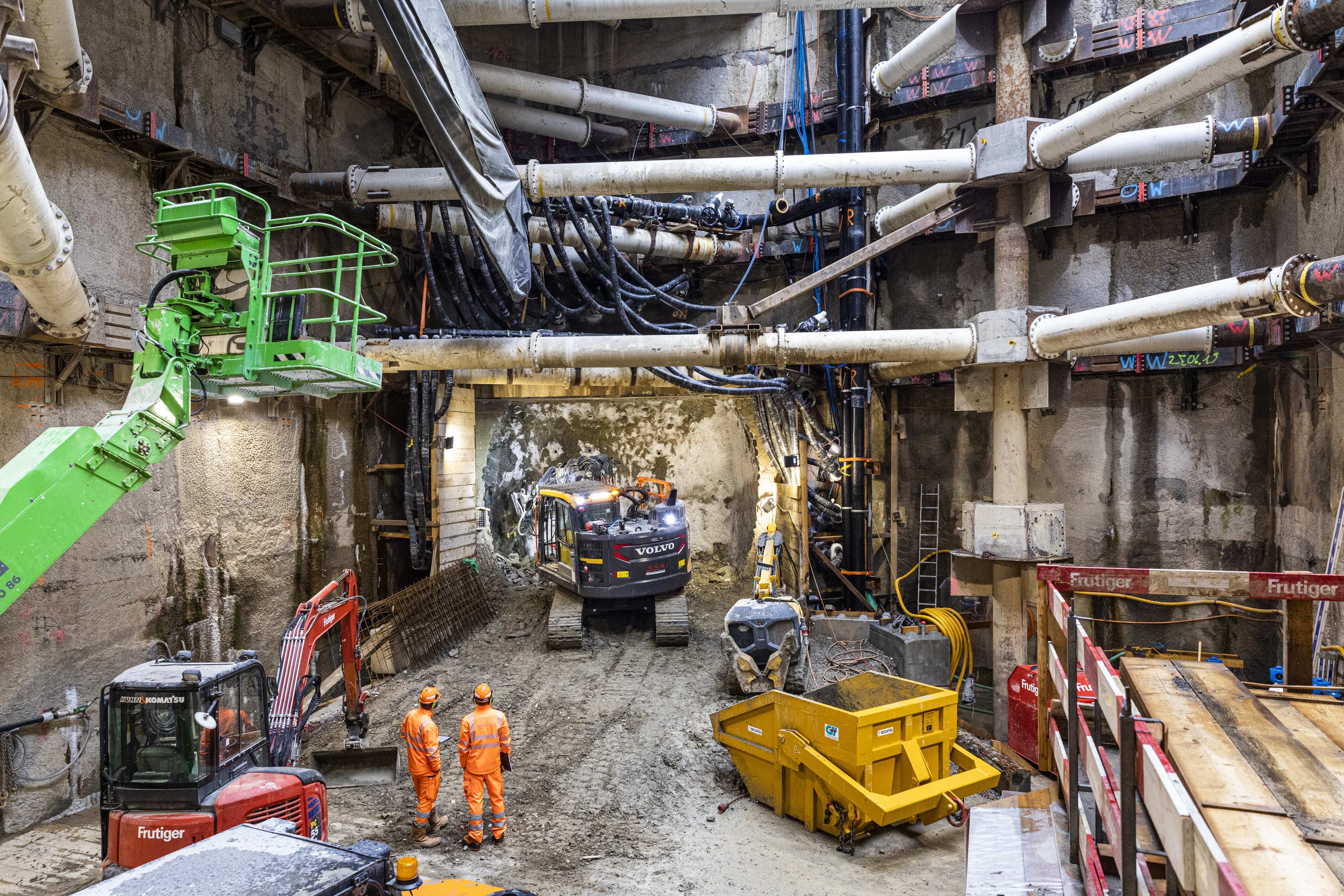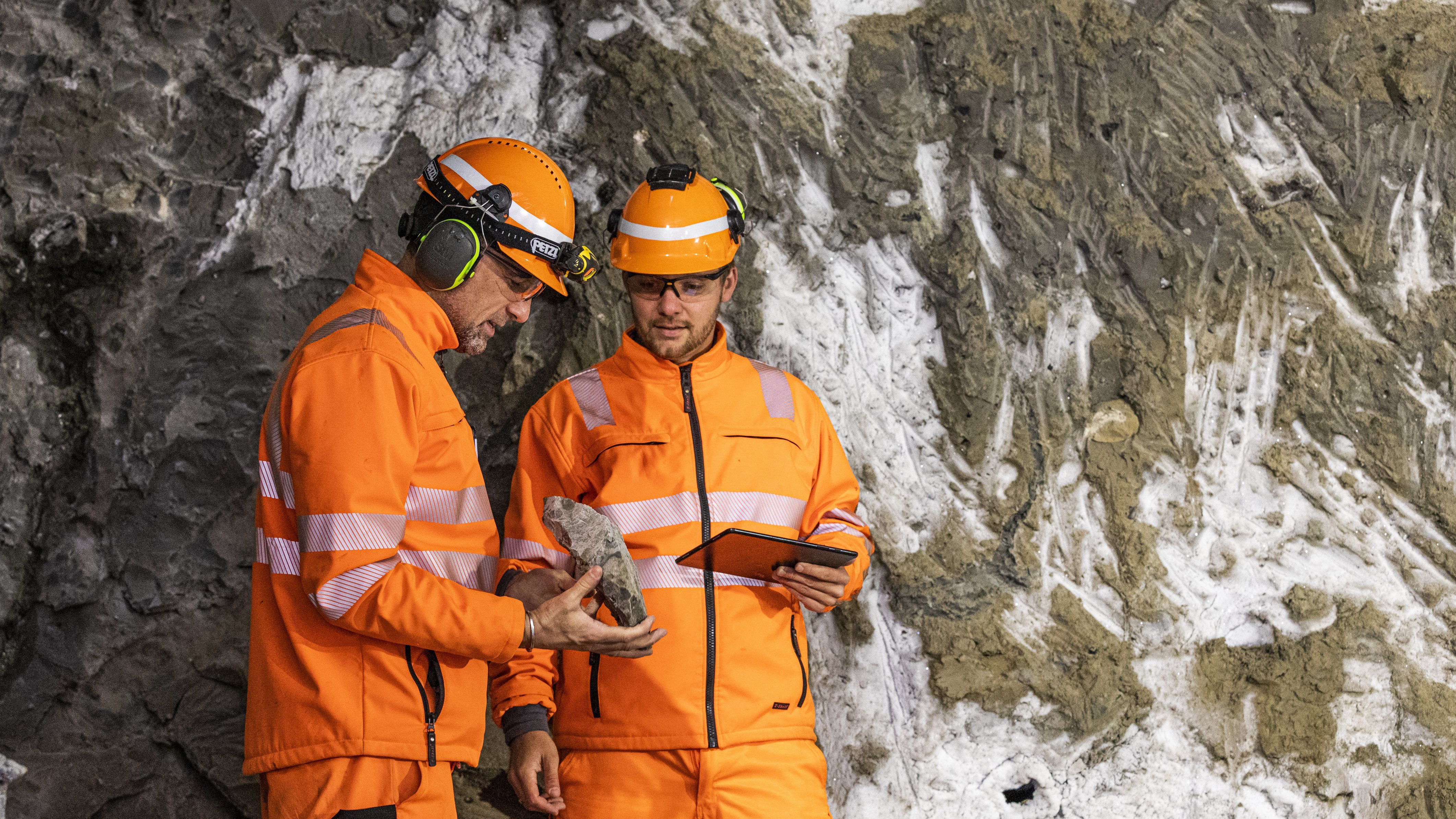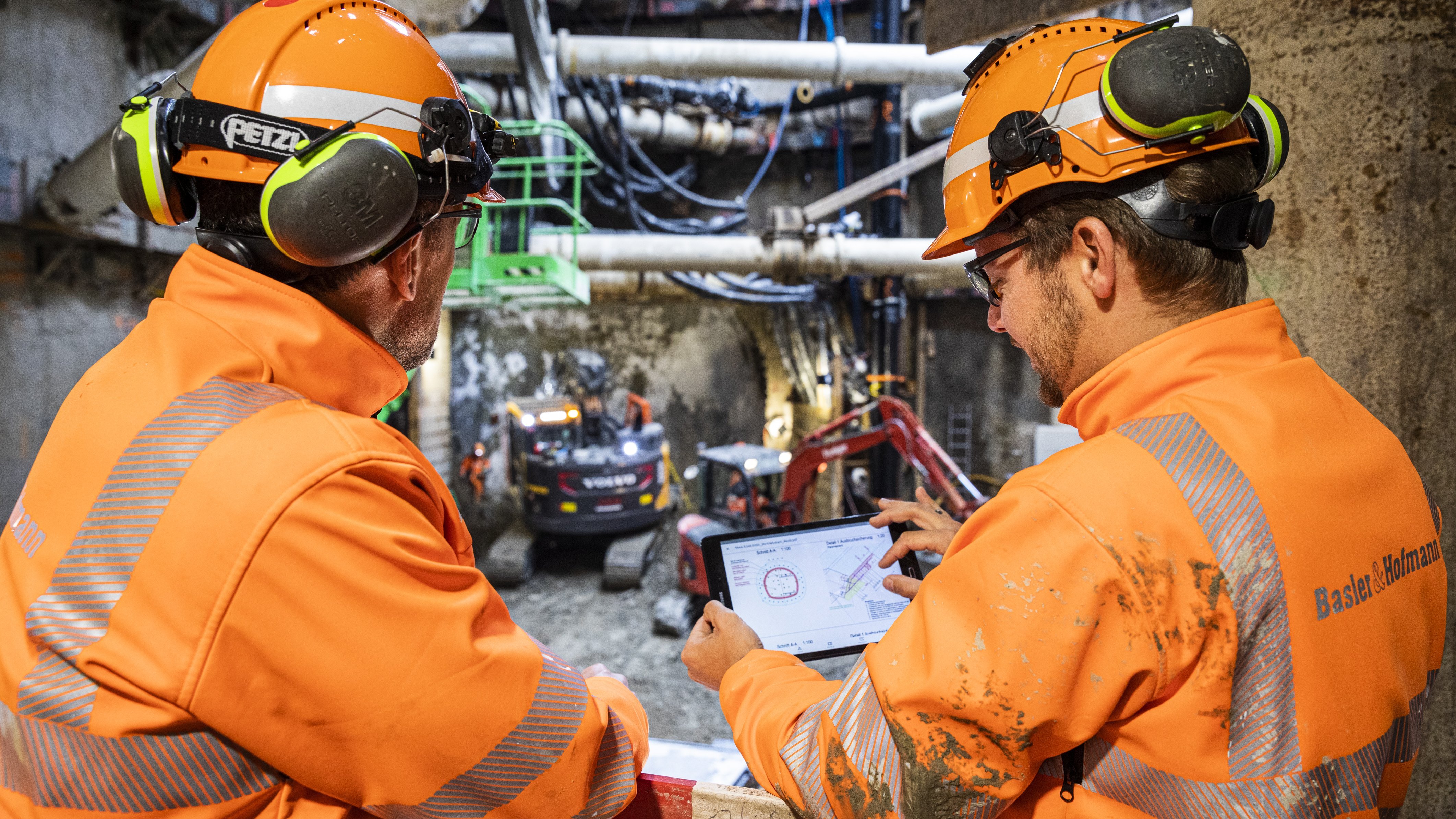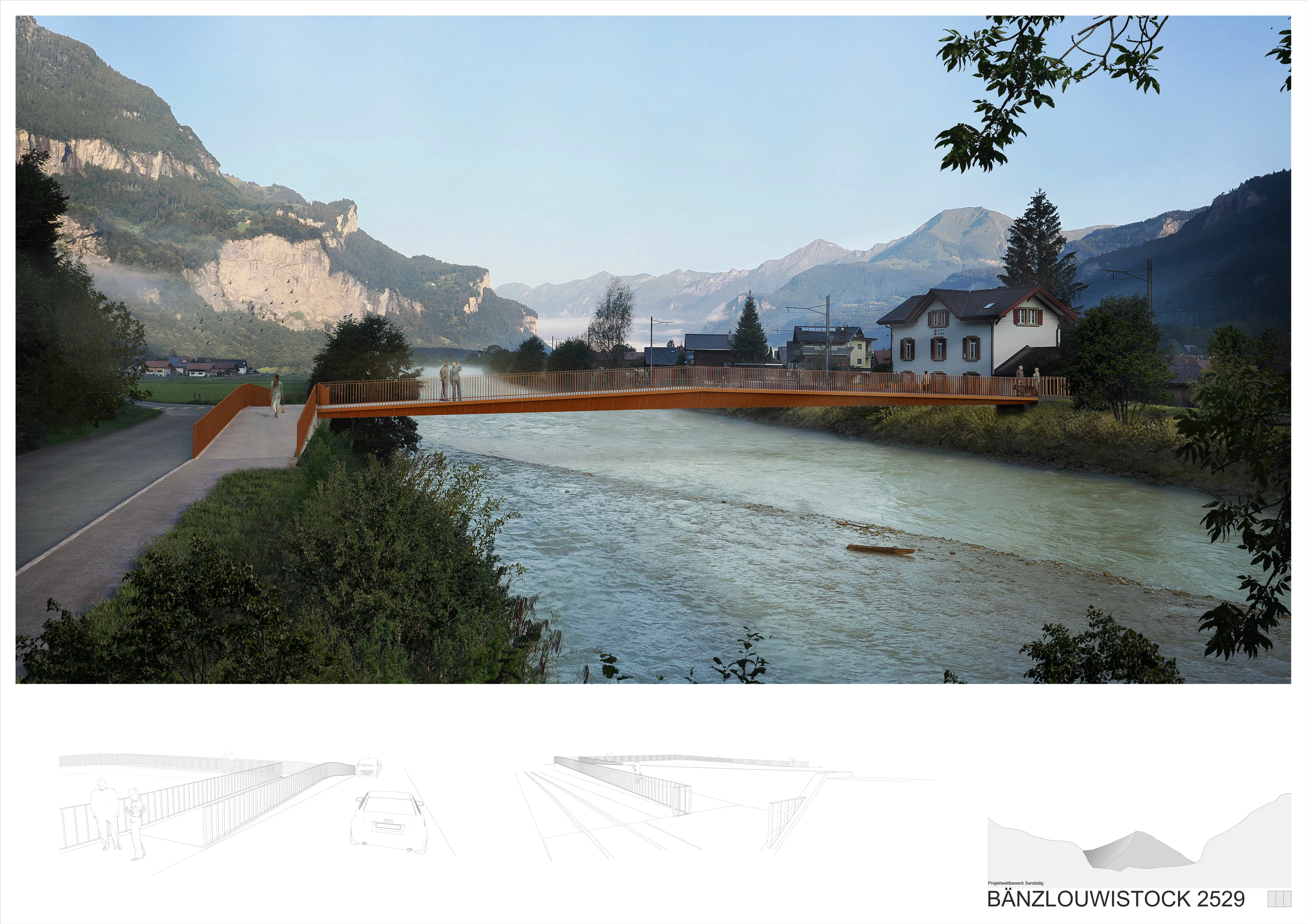Successful use of freezing method underneath Bern railway station

In July 2017, construction work began on the new underground railway station for Bern–Solothurn Regional Transport (RBS). With 60,000 passengers daily, the station is reaching the limits of its capacity. A new underground railway station with two spacious subterranean chambers is thus being constructed underneath Bern’s main station. In order to be able to build the two chambers while the main station continues to operate, it is necessary to construct an access tunnel underneath the tracks. Building the tunnel in granular soil is a delicate process that requires an unusual method: freezing.
With his mobile phone in hand, Martin Schäfer carefully watches the excavator operator approaching the frozen ground and removing a portion of the future tunnel. If the ground in the track field rises or falls more than the permitted maximums, an alarm will be sent to Martin Schäfer’s phone, Basler & Hofmann’s leading tunnel construction expert and senior site manager for this challenging project. “As a tunnel builder, you don’t get the opportunity to be responsible for such an engineering feat often. We are building the tunnel directly under the tracks of Bern’s main station. While excavation takes place below, trains travelling to every corner of Switzerland continue to run above. The work being done on this construction site is comparable to performing open-heart surgery – with the difference that our operation takes six weeks. You have to make sure that you don’t run out of breath on this marathon.” His phone rings, and Martin Schäfer picks up immediately. It’s his wife, who asks whether he will be able to put the kids to bed today.
As part of a planning consortium, Basler & Hofmann is responsible for overall management of the construction of the new RBS underground railway station. To be able to excavate the two track halls, an access tunnel is currently being built underneath tracks 1 to 3 of Bern’s main station at a depth of 9 to 12 metres, starting from an access shaft at the edge of the track field. Construction of this tunnel represents a special challenge: As the soil on the first 46 of a total of 123 metres consists of water-bearing granular soil featuring properties similar to sand, the ground in this section is being frozen before excavation. Once the freezing process is complete, the sandy soil will be able to be chipped away with a pickaxe, allowing it to be removed like rock.

A special method with a long history
Freezing is not a process used every day, but it has long been known in Switzerland: As early as 30 years ago, this method was used to build a suburban railway line tunnel 2.5 to 3.5 metres below the Limmat riverbed in Zurich. Basler & Hofmann played a key role back then, gaining valuable experience to draw on for the construction in Bern.
Martin Schäfer and Markus Gresz, Basler & Hofmann’s site manager, inspect a chunk of the excavated material. “Here at the working face, the scratch marks of the excavator impressively demonstrate how hard the ground has become due to the freezing,” the experienced site manager says. “We also looked at other approaches, but freezing proved to be the best choice,” Martin Schäfer explains. “There is no tunnel construction without risks, but we plan and build in such a way that the risks are kept to an absolute minimum. In addition, we established a very good incident management system that would allow us to act immediately if something were to happen,” Martin Schäfer says.

A refrigeration system for tunnel construction
In the first step of the process, the area of the future tunnel was frozen by drilling casing pipes exceeding 60 metres into the ground in short intervals. With the so-called HDD drilling method, the pipes were inserted with positional accuracy of 20 centimetres. The freezing lances, temperature measuring chains and irrigation and drainage pipes were then inserted into these casing pipes. The freezing lances were attached to a refrigeration system with many black freezing lines. In a process that started in early August and ended in early September, heat was gradually removed from the ground throughout the entire cross-section of the tunnel with brine as a freezing agent. Clearance to break through the diaphragm wall was given on 11 September 2020, and tunnelling work could then begin.
Markus Gresz climbs into a narrow service corridor under the tunnel floor. It is dark, damp and cold. He points to the frozen heads of the freezing lances with a torch. “Sometimes we put thermometers on the heads to check the temperature locally,” he explains. Temperatures are measured with a sophisticated system including the installation of a total of 10 temperature measuring chains. “Now that the ground is completely frozen, we can switch the refrigeration system off for a bit and back on again. Because ice expands, the frozen area cannot be allowed to keep growing, which could cause the tracks to be lifted in a manner that we don’t want,” Markus Gresz explains.

Digitalisation of site management
When he returns from the service corridor, Markus Gresz seeks out Martin Schäfer. Together they monitor the progress of the current construction work and document the progress. Until recently, work like this was done with a notepad and camera, but today everything is entered directly in digital format using a tablet. “We can work through checklists, create documentation and journals and generate tasks in this software. All of this means that we are enormously more efficient, and that our communication is greatly simplified,” says Martin Schäfer, visibly excited. The entire tunnel was also planned using Building Information Modelling (BIM). Both in advance as well as during construction, the digital model made it possible to check whether there could be any conflicts between the directional bores and the tunnel vault.

Successful completion of the freezing phase
In mid-November, the time had come: After a construction period of roughly two months, the critical phase in the frozen ground was complete – and the refrigeration system was switched off. Safe operation of the railway lines above the tunnel could be maintained throughout the tunnel excavation in granular soil. Now the construction of the tunnel continues in the rock, with the new RBS station scheduled to open in 2027.



